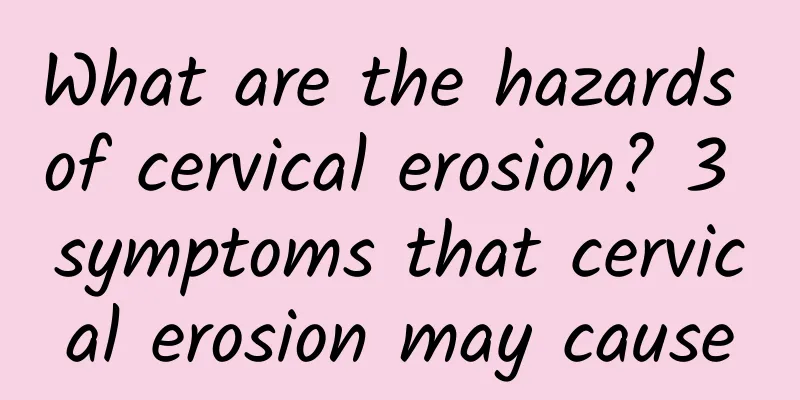What is the use of spectral treatment for cervical erosion? What causes cervical erosion in women?

|
What is the use of spectrometer to treat cervical erosion? Cervical erosion seriously harms women's physical and mental health. Once gynecological cervical erosion occurs, it is necessary to take certain effective measures to solve it. What is the use of spectrometer to treat cervical erosion? What is the use of spectrometer in treating cervical erosion? 1. What is the use of spectrometer in treating cervical erosion? The actual effect of spectrometer in treating cervical erosion is very good, and the side effects are not serious, and there is no complication. Physical therapy is suitable for patients with mild to moderate cervical erosion and moderate to severe cervical erosion. Common methods include electric ironing, laser therapy, and cold therapy. The therapeutic principle of the spectrophotometer therapy device is to produce photochemical effects on plants, so that it produces important microbial effects and therapeutic effects. The membrane protein in the cell absorbs red light more strongly. After being irradiated with red light, the catalase activity of the membrane protein increases, which can increase the metabolism of the cell; increase the glycogen content, protein production and adenosine triphosphate dissolution, thereby increasing the cell's regeneration and promoting the healing of wounds and ulcers; at the same time, it also increases the inflammatory mediators in the white blood cells and enhances the body's immune function. It can treat cervical erosion; it has special effects on vulvar leukoplakia, breast hyperplasia, vulvar itching, genital warts, sexually transmitted diseases, etc.; it also has special effects on treating superficial cancers (such as malignant tumors in the mouth, jaw, tongue, etc.), various ulcers, mucosal diseases, bedsores, psoriasis, herpes, flat warts, oral leukoplakia, and intractable wounds. 2. What causes cervical erosion? Cervical erosion refers to the displacement of the squamous epithelium on the outside of the cervical opening and the columnar epithelium on the inside of the cervix at the junction. This condition is a physiological change caused by the estrogen in the female body. Cervical erosion lasts for decades from the puberty of women. Some people have it, some don't, depending on their physical constitution. There are two types of epithelial cells on the surface of the female cervix during the embryogenesis period: the initial squamous epithelium and the columnar epithelium. Before puberty, the initial "squamo-columnar junction" is located in the middle of the cervical canal. After puberty, under the action of estrogen, the volume of the cervix increases rapidly and greatly exceeds the uterine body, and then "cervical ectropion" occurs. The ectropion exposes the cervical columnar epithelial cells to the external cervical os, which is bright red and rough - the red color is because the columnar epithelial cells are arranged in a single plane, and there is a rich vascular network underneath; the roughness is because the columnar epithelial cells are connected to each other and are fluffy or granular. 3. What are the symptoms of cervical erosion? The symptom of cervical erosion is relatively typical. Affected by the secretion of female hormones, from the human eye, the external opening of the cervix is a granular red area, as if "erosion" has occurred. Earlier textbooks listed "cervical erosion" as one of the symptoms of chronic cervicitis, believing that the size of the range refers to the mild and severe degree of inflammation. Area less than 1/3 is mild, 1/3-2/3 is mild to moderate, and more than 2/3 is moderate to severe. However, this is actually the different degrees of outward curling of columnar epithelial cells under the influence of estrogen, which is a normal physiological phenomenon. It should be noted that cervical erosion should be distinguished from cervicitis. If there is a lot of leucorrhea, yellowing, and a strong odor, this is a manifestation of cervicitis, which is a symptom after the cervix is infected. Cervical cysts and hypertrophy are also the result of cervicitis. Once the symptoms of cervicitis appear, you should see a doctor as soon as possible and avoid delaying the condition. |
<<: Is abortion harmful to women? What should we pay attention to after abortion?
>>: What are the hazards of severe cervicitis in women? 3 methods can treat severe cervicitis
Recommend
Losing weight starts from the head! Press 6 major acupoints frequently
Losing weight is not just the responsibility of t...
Treatment of Dysmenorrhea
Dysmenorrhea refers to pain in the lower abdomen ...
What are the dietary principles for patients with adnexitis?
What are the dietary principles for patients with...
What are the causes and hazards of cervical erosion?
The causes of cervical erosion include many facto...
Is 11MM of pelvic fluid normal? How to judge
In clinical practice, the severity of pelvic effu...
What are the dietary considerations for hyperprolactinemia?
Spring is the beginning of all things. Diseases h...
Can I have a baby if I have Bartholin's glanditis?
Can you get pregnant and have a baby if you have ...
Love at first sight detox water! 4 simple steps
We all know that the first thing to do for detoxi...
People need to rest for a few days before going to work
How many days of rest do people need before they ...
What is the high incidence of ectopic pregnancy?
What are the causes of high incidence of ectopic ...
What are the key points of daily diet for women with cervical erosion? Special symptoms and dietary points for women with cervical erosion
If cervical erosion occurs, you need to seek medi...
Boiled chicken breast tastes like a tire when you bite it? Three simple steps to instantly transform it into a marshmallow!
The most painful time of the day is deciding what...
Pathological symptoms of amenorrhea
Women generally experience menarche before the ag...
What should I do if my menstrual flow is heavy?
What should I do if my menstrual flow is heavy? M...
Vulvar itching, leucorrhea, abnormal odor
Vulvar itching, abnormal vaginal discharge, and o...









